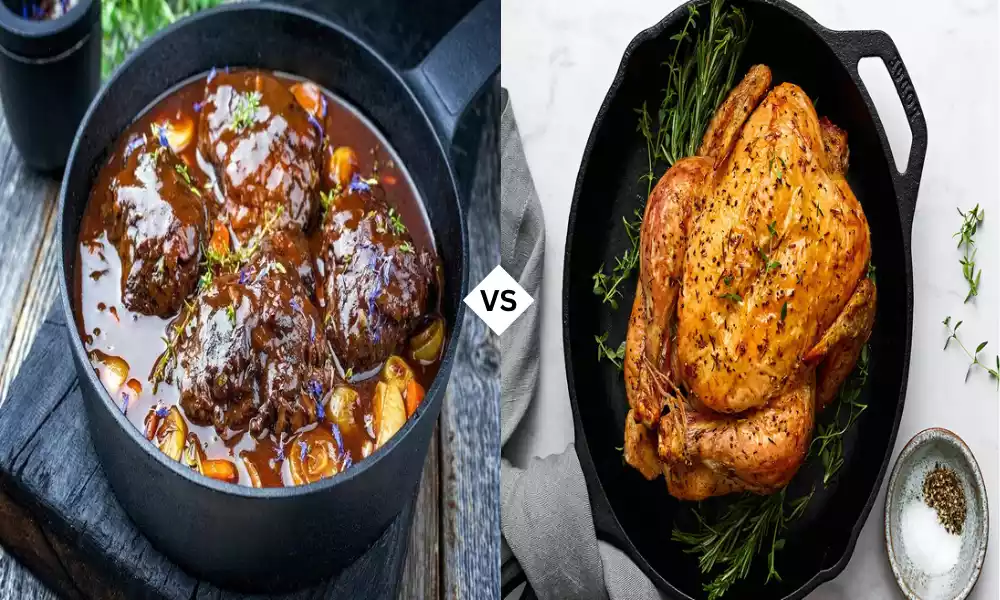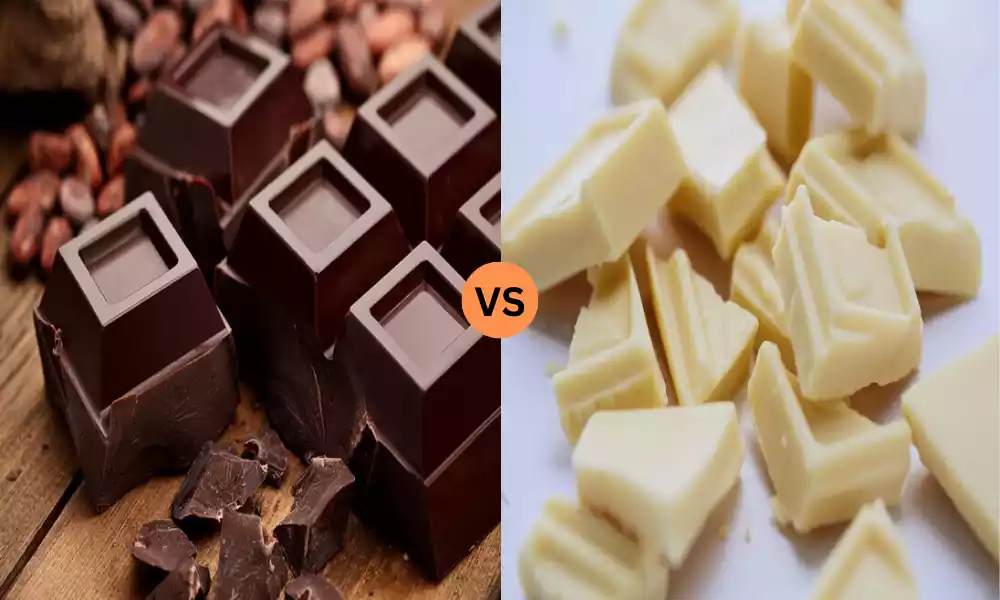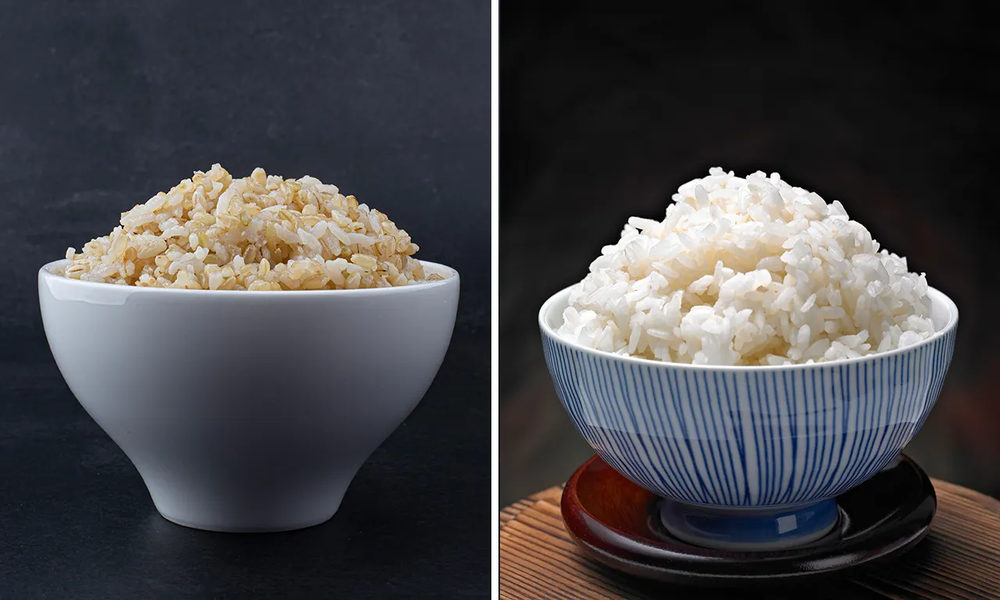Braising and roasting are two distinct cooking methods, each yielding unique flavors and textures. Braising involves cooking ingredients slowly in a small amount of liquid, typically in a covered pot. This method is ideal for tougher cuts of meat, as the slow cooking process tenderizes them.
Roasting involves cooking food, usually meat or vegetables, in an open pan in an oven. This method enhances flavor through caramelization and browning and is suited for more tender cuts of meat or fresh vegetables. Both methods bring out rich flavors but in different ways.
Definition of Braising
Braising is a cooking method that involves slowly cooking food, typically meat, in a small amount of liquid at a low temperature. The process begins with searing the meat at a high temperature to create a flavorful crust.
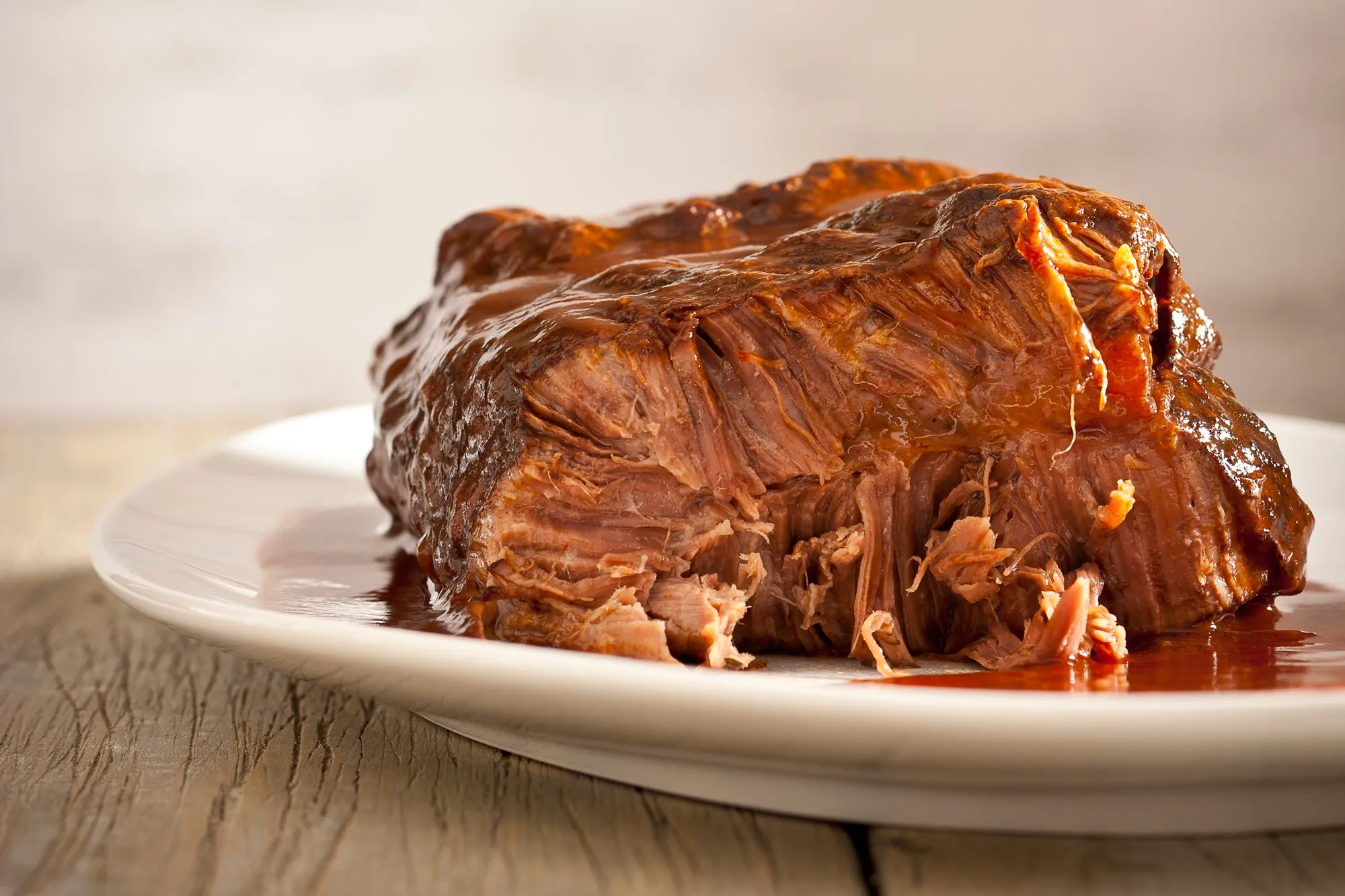
Then, it is simmered in a covered pot with a minimal amount of liquid, like broth, wine, or water, along with various seasonings and sometimes vegetables. The low and slow cooking allows tough, fibrous meats to become tender and flavorful as the collagen breaks down.
This technique is particularly effective for tougher cuts of meat, making them juicy and tender. Braising can be done on the stovetop or in an oven.
Definition of Roasting
Roasting is a cooking method that involves cooking food, usually meat, poultry, or vegetables, in an oven using dry heat. Unlike braising, which involves cooking in liquid, roasting relies on the circulation of hot air around the food to cook it evenly.

This process typically requires a higher temperature than braising. The high heat allows for the Maillard reaction, which browns the surface of the food, creating a rich flavor and a crispy texture on the outside while keeping the inside moist.
Roasting is well-suited for tender cuts of meat and fresh vegetables, as it enhances their natural flavors and textures. This method is often used for preparing large pieces of meat like roasts, or whole birds, or for baking vegetables to achieve a caramelized exterior.
Comparison table of Braising vs Roasting
Here is a comparison table highlighting the key differences between Braising and Roasting:
| Aspect | Braising | Roasting |
|---|---|---|
| Cooking Method | Slow cooking in a small amount of liquid | Cooking with dry heat in an oven |
| Temperature | Low to medium; typically around 275-350°F (135-175°C) | Higher; typically above 350°F (175°C) |
| Cover | Usually covered to retain moisture | Uncovered to allow for even browning |
| Ideal For | Tougher cuts of meat (e.g., beef brisket, pork shoulder) | Tender cuts of meat, poultry, vegetables |
| Texture | Tenderizes tough meats, resulting in a moist, juicy texture | Produces a crispy exterior with a moist interior |
| Flavor Profile | Develops deep, complex flavors due to slow cooking and liquid | Enhances natural flavors, caramelization, and browning |
| Time | Longer cooking times, often hours | Generally quicker, varies based on size and type of food |
| Equipment | Typically requires a pot or Dutch oven | Requires an oven and roasting pan |
| Common Liquids | Broth, wine, water, juices | None, though fats or oils may be used on the surface of the food |
| Searing | Usually starts with searing the outside for flavor | No initial searing; the high heat of the oven browns the surface |
This table summarizes the main characteristics of each cooking method, providing a clear distinction between braising and roasting.
History and Evolution of Braising and Roasting
The history and evolution of braising and roasting are deeply intertwined with the development of human cooking practices and culinary traditions.
Braising
- Ancient Origins: The concept of braising likely dates back to ancient times. Early humans discovered that cooking tough meats in a liquid over low heat for a prolonged period made them more palatable and digestible. This could have been practiced as soon as cooking pots that could withstand prolonged exposure to heat were developed.
- Cultural Adaptations: Different cultures have adapted braising to their local ingredients and culinary traditions. For example, the French have classic braises like “Coq au Vin,” the Chinese have “Red Braised Pork,” and various cultures have versions of slow-cooked stews and pot roasts.
- Evolution with Technology: The development of ovens and stovetops allowed for more controlled and consistent braising environments. The invention of the Dutch oven, a thick-walled cooking pot with a tight-fitting lid, was a significant milestone in braising, as it distributed heat evenly, making it easier to maintain a consistent low temperature.
Roasting
- Primitive Beginnings: Roasting is one of the oldest cooking methods. Early humans would have roasted meat over an open fire. This method was simple and required no special equipment, other than a stick to hold the food over the flames.
- Refinement in Ancient Cultures: As civilizations advanced, so did roasting techniques. The Greeks and Romans used large, elaborate roasting spits to cook meats, and this practice was considered an art form. Banquets often featured elaborately prepared roasted meats.
- Introduction of Ovens: With the invention of ovens, roasting became more sophisticated. Initially, large communal ovens were a focal point in towns where people would bring their prepared meats to be roasted. Later, as kitchen ovens became common, roasting became an everyday cooking method.
- Modern Roasting: The development of modern kitchen appliances like gas and electric ovens made roasting more accessible and controllable. This allowed for more precise cooking, leading to better consistency and the ability to experiment with different roasting techniques.
Impact on Culinary Traditions
Both braising and roasting have significantly influenced culinary traditions worldwide. These methods have been adapted to local ingredients and cultural preferences, leading to a rich diversity of dishes. The evolution of cooking equipment has continuously shaped how these methods are applied, making them more convenient and consistent.
In contemporary cuisine, both techniques are celebrated for their ability to transform basic ingredients into complex and flavorful dishes. The resurgence of interest in traditional cooking methods and slow food has further highlighted the importance of these techniques in modern kitchens.
Equipment and Tools Required
The equipment and tools required for braising and roasting vary, each tailored to optimize the cooking method’s specific needs. Here’s a breakdown of the essential equipment for both techniques:
Braising
- Heavy-Bottomed Pot or Dutch Oven: A heavy pot or Dutch oven with a tight-fitting lid is crucial for braising. It must be big enough to allow for all the ingredients, without causing overcrowding. The heavy bottom ensures even heat distribution, preventing burning.
- Lid: The lid is essential to keep the moisture in, ensuring a slow, even cook. In braising, the lid helps to create a moist cooking environment.
- Stove and/or Oven: Braising can be done either on the stove or in the oven. Some recipes require starting on the stove (for searing) and then moving to the oven for slow cooking.
- Tongs or Spatula: These are needed for turning and handling the meat or other ingredients, especially during the searing process.
- Sharp Knife: Useful for trimming meat and chopping vegetables or herbs.
- Cutting Board: Necessary for preparing ingredients.
- Measuring Cups and Spoons: For accurately measuring the amount of liquids and spices.
Roasting
- Roasting Pan: A sturdy roasting pan is essential for even cooking. It should be large enough to hold the meat or vegetables without crowding them.
- Rack (Optional): A rack that fits inside the roasting pan can be used to elevate the meat, allowing heat to circulate it evenly.
- Oven: Roasting is primarily done in an oven, so a reliable and accurately calibrated oven is important.
- Meat Thermometer: Essential for ensuring that meat is cooked to the desired internal temperature, particularly for large cuts.
- Aluminum Foil or Parchment Paper: These can be used for lining the pan for easier cleanup or for covering the meat to prevent excessive browning.
- Basting Brush or Spoon: Used for basting the meat with its juices or added fats to keep it moist during cooking.
- Sharp Knife and Carving Set: For carving roasted meats.
- Cutting Board: Preferably one with a groove to catch any juices when carving meat.
- Tongs or Spatula: For handling the meat or vegetables during the roasting process.
Both braising and roasting require a set of basic kitchen tools such as knives, cutting boards, and measuring utensils, in addition to the specific equipment mentioned above. It’s also important to have good quality, durable equipment, as both methods involve prolonged cooking times and often high temperatures.
Advantages and Disadvantages
Braising and roasting, like all cooking methods, come with their own set of advantages and disadvantages:
Braising
Advantages
- Tenderizes Tough Cuts: Braising is excellent for making tough, less expensive cuts of meat tender and flavorful.
- Flavor Development: Slow cooking in liquid with herbs and spices allows for deep, complex flavor development.
- Moisture Retention: The covered cooking method retains moisture, preventing the drying out of ingredients.
- Versatility: Can be used for a variety of meats and vegetables.
- Efficiency: Once the initial preparation is done, the dish cooks slowly without needing much attention.
Disadvantages
- Time-Consuming: Braising requires a long cooking time, often several hours.
- Limited Browning: While searing can provide some browning, the slow cooking process doesn’t produce the same caramelization as roasting.
- Requires Watchfulness Early On: The initial searing stage requires careful attention to prevent burning.
- Heat Distribution: Requires a pot with good heat distribution to avoid uneven cooking.
Roasting
Advantages
- Flavor and Texture: Provides a caramelized, crispy exterior while keeping the inside tender.
- Simplicity: Generally a straightforward process, requiring minimal intervention once the roast is in the oven.
- Aesthetic Appeal: Roasting can yield an appealing, browned, and attractive finish.
- Healthy: Often requires less added fat than other cooking methods.
- Good for Large Cuts: Ideal for cooking large cuts of meat or whole birds.
Disadvantages
- Risk of Drying Out: Without proper basting or marinating, roasted meats can become dry.
- Uneven Cooking: Certain cuts of meat or improperly arranged ingredients can cook unevenly.
- Requires Constant Monitoring: Especially towards the end, to prevent overcooking.
- High Energy Consumption: Roasting at high temperatures for extended periods can consume more energy.
Both braising and roasting offer unique advantages in terms of flavor, texture, and culinary application. The choice between them depends on the desired outcome, the type of ingredients, and the time and resources available. Each method, while having its drawbacks, is a valuable technique in the culinary repertoire.
When to Choose Braising
Choosing when to use braising as a cooking method depends on several factors, including the type of ingredient you’re cooking, the desired texture, and the flavor profile you’re aiming for.
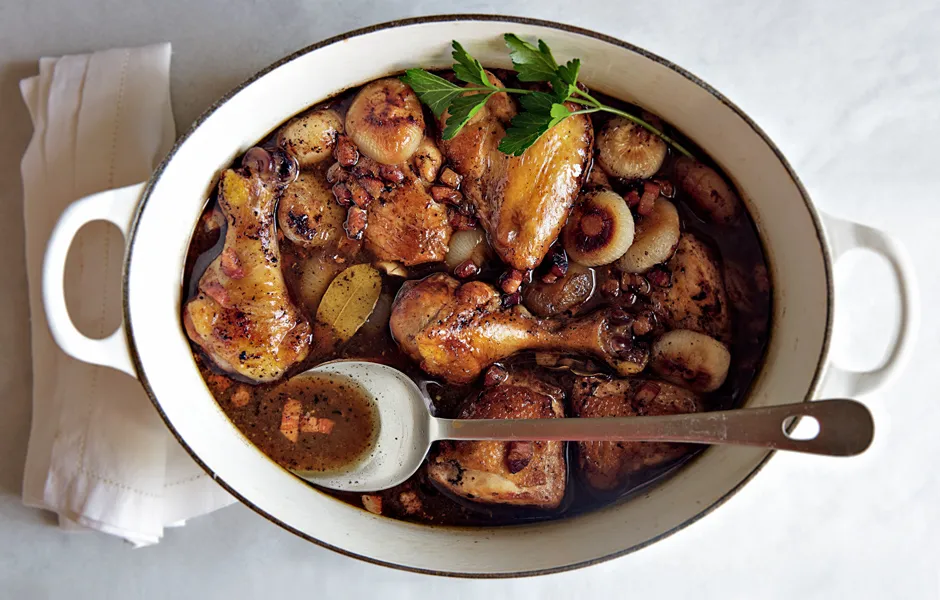
Here are some situations where braising is an ideal choice:
- Cooking Tough Cuts of Meat: Braising is particularly effective for tougher cuts of meat, such as beef brisket, pork shoulder, lamb shanks, or chicken thighs. These cuts have more connective tissues and fibers, which become tender and flavorful when cooked slowly in liquid.
- Seeking Rich, Deep Flavors: If you’re aiming for a dish with complex layers of flavor, braising is a great option. The slow cooking process allows the food to absorb the flavors of the cooking liquid, herbs, and spices, resulting in a rich and satisfying taste.
- Desiring Tender and Moist Texture: Braising ensures that meats and vegetables are not only tender but also moist. This is due to the combination of the initial sear and the subsequent slow cooking in a covered pot, which locks in moisture.
- Preparing One-Pot Meals: Braising is convenient for making one-pot meals. After the initial searing, additional ingredients like vegetables and herbs can be added to the pot, creating a complete dish with minimal cleanup.
- Cooking in Advance: Braised dishes often taste better the next day, as the flavors continue to meld. This makes braising a good technique for meals that need to be prepared in advance.
- Winter and Comfort Foods: Braising is perfect for creating hearty, comforting dishes that are especially appealing in colder weather. Dishes like stews, pot roasts, and braised ribs are warming and satisfying.
- Economical Cooking: Since braising can transform tougher, often less expensive cuts of meat into tender, flavorful dishes, it’s a budget-friendly cooking option.
- Low and Slow Cooking Preference: If you prefer a cooking method that doesn’t require constant attention and benefits from a ‘set it and forget it’ approach, braising is an excellent choice.
Choose to braise when you’re working with tougher cuts of meat, looking for depth of flavor, aiming for tenderness and moisture, preparing one-pot meals, cooking in advance, seeking comfort food, cooking on a budget, or when you prefer a low-maintenance cooking method.
When to Choose Roasting
Choosing to use roasting as a cooking method is ideal in several scenarios, given its unique advantages and the culinary outcomes it can achieve.

Here are some situations where roasting is particularly suitable:
- Cooking Tender Cuts of Meat: Roasting is perfect for tender cuts like beef tenderloin, pork loin, lamb leg, or whole poultry (like chicken or turkey). These cuts benefit from the dry heat, which browns and crisps the exterior while keeping the interior juicy.
- Achieving a Crisp Exterior: When you want a dish with a delicious, caramelized crust, roasting is the way to go. This method is great for creating that desirable crispy exterior on both meats and vegetables.
- Preparing Vegetables: Roasting can bring out the natural sweetness in vegetables and give them a pleasing texture. It’s ideal for root vegetables (like potatoes, carrots, and beets), as well as for others like Brussels sprouts, cauliflower, and asparagus.
- Healthy Cooking: If you’re looking for a healthier cooking method that requires minimal added fat, roasting is a good choice. It allows the natural flavors of the food to shine without the need for excess oil or butter.
- Ease and Convenience: Roasting can be relatively hands-off. Once the food is in the oven, it requires little attention until it’s done, making it convenient for busy cooks.
- Cooking for a Crowd: Roasting is suitable for large gatherings or family meals, as you can roast large cuts of meat or big batches of vegetables to feed many people at once.
- Desiring a Simple Preparation: Roasting often requires minimal preparation. A simple seasoning with herbs, spices, salt, and a bit of oil is typically enough to yield delicious results.
- Making Comfort Foods: Roasting is perfect for creating comforting, hearty dishes, especially during colder months. Roast chicken, beef roasts, and roasted root vegetables are classic comfort foods.
- Browning and Flavor Development: The high heat of roasting is excellent for developing deep, complex flavors through browning and caramelization, which can’t be achieved with lower-temperature cooking methods.
Choose roasting when working with tender cuts of meat, aiming for a crisp exterior, preparing vegetables, seeking a healthier cooking method, needing ease and convenience, cooking for a crowd, wanting simple preparation, making comfort foods, or looking to develop rich flavors through browning.
Which Technique Should You Choose?
Choosing between braising and roasting depends on several factors, including the type of ingredient you’re cooking, the desired texture and flavor, the available equipment, and the time you have for cooking. Here’s a guide to help you decide:
- Type of Ingredient:
- Tough Cuts of Meat: Choose braising for tougher cuts like beef brisket, pork shoulder, lamb shanks, or oxtail. The slow, moist heat tenderizes the meat by breaking down connective tissues.
- Tender Cuts of Meat: Opt for roasting for tender cuts like beef tenderloin, pork loin, chicken breasts, or leg of lamb. Roasting enhances their natural flavors without the need for tenderization.
- Vegetables: Root vegetables and bulbs (like potatoes, carrots, and onions) can be either braised or roasted. Leafy greens or delicate vegetables might not hold up well to braising but can be roasted quickly.
- Desired Texture and Flavor:
- Moist and Tender: If you prefer a moist and tender texture, especially for meat, go with braising. It creates a rich sauce that adds to the dish’s flavor.
- Crispy and Browned: If you enjoy a crispy, caramelized exterior with a tender inside, roasting is your best bet. It’s ideal for achieving a browned, crunchy texture on meats and vegetables.
- Equipment Availability:
- Braising: Requires a pot or a Dutch oven that can be used on the stove and/or in the oven. The pot must have a tight-fitting lid to keep the moisture in.
- Roasting: Requires an oven and a roasting pan. Some recipes may benefit from a roasting rack within the pan to elevate the meat and ensure even cooking.
- Time Considerations:
- Braising: It’s a slow cooking method, often taking several hours. However, it’s mostly hands-off once the initial preparation is done.
- Roasting: Generally quicker than braising, but the time depends on the size and type of the ingredient. Roasting requires more attention, especially towards the end, to prevent overcooking.
- Flavor Complexity:
- Braising: Excellent for developing complex, layered flavors, especially with the addition of aromatic vegetables, herbs, and spices to the braising liquid.
- Roasting: Best for highlighting the natural flavors of the ingredients. Spices and herbs can be used to add more flavor, but the primary taste is that of the roasted ingredient itself.
- Health Considerations:
- Braising: This can be a healthier option if you’re conscious about fat intake, as it doesn’t require a lot of added fat.
- Roasting: Can also be healthy, especially if minimal oil is used. However, it can require more fat for basting to ensure the ingredients don’t dry out.
The choice between braising and roasting should be based on the nature of the ingredients, the desired result, the cooking tools you have, the amount of time you can dedicate to the process, and your nutritional preferences. Both methods have their unique merits and can produce delicious results.
Combining Braising and Roasting
Combining braising and roasting in a single recipe can yield excellent results, leveraging the strengths of both cooking methods. This approach is often used in gourmet cooking to maximize flavor, texture, and presentation.
Here’s how you can combine these techniques:
- Start with Braising:
- Begin by braising the main ingredient, typically a tough cut of meat. First, you need to sear the meat to create a delicious crust.
- After searing, add a cooking liquid (like broth, wine, or a mix of both), along with herbs, spices, and aromatic vegetables.
- Cover and cook slowly at a low temperature. This stage tenderizes the meat and infuses it with the flavors of the liquid and seasonings.
- Transition to Roasting:
- Once the meat is tender from braising, transfer it to a roasting pan.
- The roasting stage typically involves a higher temperature to create a crispy, caramelized exterior.
- During this phase, you can baste the meat with the braising liquid or a glaze to enhance flavor and promote browning.
- Use of Braising Liquid:
- The remaining liquid from braising can be reduced and used as a sauce. This sauce will have depth and complexity from the long cooking process and can be served with the finished dish.
- Optionally, you can add more ingredients to the sauce, like cream or butter, for richness.
- Vegetable Accompaniment:
- Vegetables can be added during either the braising or roasting stages. Root vegetables, for instance, can be braised with the meat and then roasted for a crisp finish.
- Alternatively, fresh vegetables can be roasted separately and served alongside the meat.
- Application in Dishes:
- This method is excellent for dishes like pot roasts, pork belly, or short ribs, where you want both the tenderness from braising and the crisp, flavorful crust from roasting.
- It’s also a good technique for holiday meals or special occasions where you want to impress with both flavor and presentation.
By combining braising and roasting, you take advantage of moist-heat cooking to tenderize and infuse flavor, followed by dry-heat cooking to achieve a pleasing texture and appearance. This layered approach to cooking can elevate a dish, making it suitable for both gourmet cooking and special home-cooked meals.
Expert Tips for Perfect Braising and Roasting
Braising Tips:
- Sear Meat Properly: Start with a good sear to develop flavor.
- Don’t Overcrowd the Pan: This ensures even browning.
- Use Quality Liquid: The braising liquid contributes significantly to the dish’s flavor.
- Low and Slow: Cook at a low temperature for several hours for optimal tenderness.
- Balance Flavors: Include a mix of savory, sweet, and acidic components in your braising liquid.
Roasting Tips:
- Preheat the Oven: Start with a hot oven for an even roast.
- Season Well: Proper seasoning enhances flavor.
- Use a Thermometer: For meats, a thermometer ensures perfect doneness.
- Rest the Meat: Allow meat to rest after roasting for juicier results.
- Vegetable Size: Cut vegetables uniformly for even roasting.
Common Mistakes to Avoid
Braising:
- Rushing the Searing Process: Not searing meat properly can result in less flavor.
- Using Too Much Liquid: The meat should be partially submerged, not covered.
- Overcooking: This can make the meat mushy.
Roasting:
- Incorrect Oven Temperature: Too low or high can affect texture and flavor.
- Not Resting Meat: Cutting into meat too soon can cause it to lose its juices.
- Overcrowding the Pan: This can lead to steaming instead of roasting.
Final Thoughts
Braising and roasting are two fundamental cooking techniques, each with unique attributes. Braising excels in tenderizing tough cuts of meat and developing deep, complex flavors through slow cooking in liquid.
Roasting, on the other hand, is ideal for highlighting the natural flavors of tender meats and vegetables, creating a crispy exterior and moist interior. Both methods are essential in culinary arts, offering distinct textures and flavor profiles.

